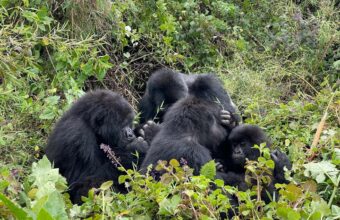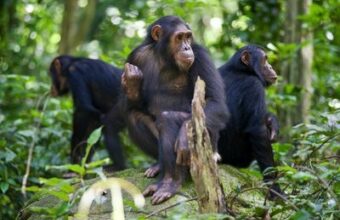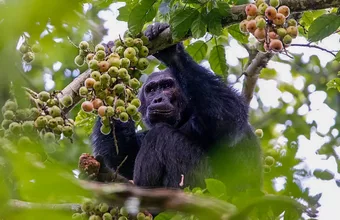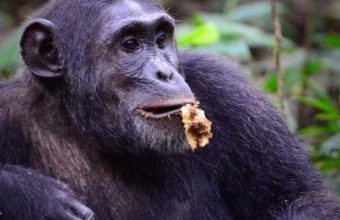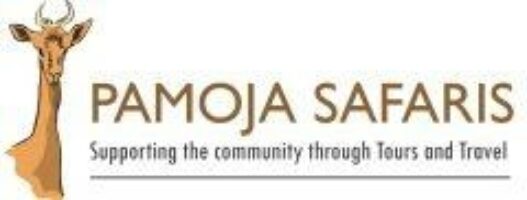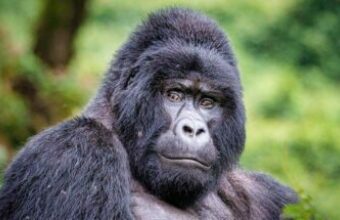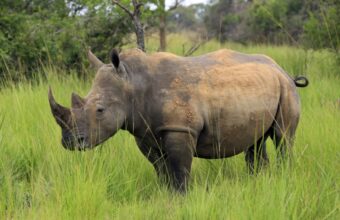-
Kibale Forest National Park
-
Queen Elizabeth National Park
-
Queen Elizabeth National Park
-
Murchison Falls National Park
-
Gombe Stream National Park
-
Mahale Mountains National Park
-
Rubondo Island National Park
-
Nyungwe National Park
-
Gishwati-Makura National Park
-
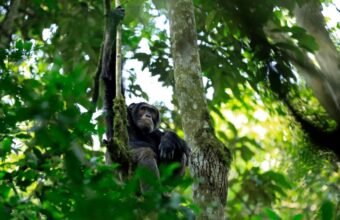
-
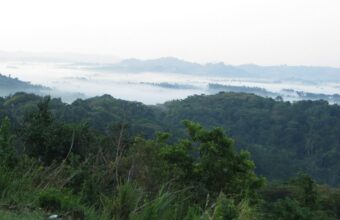
-
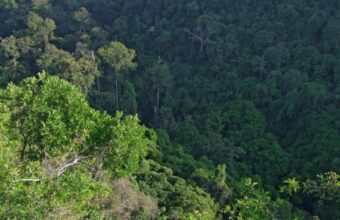
-
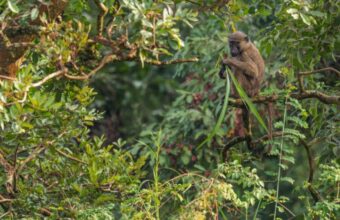
-
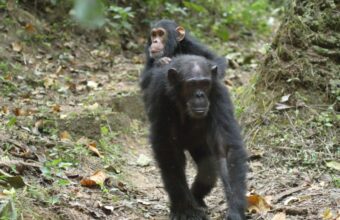
-
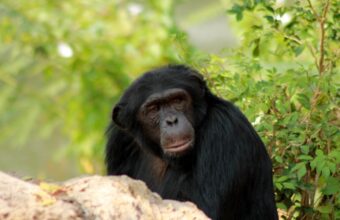
-
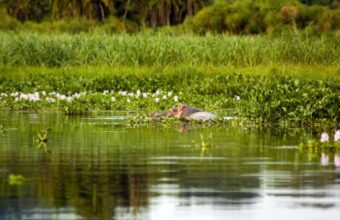
-
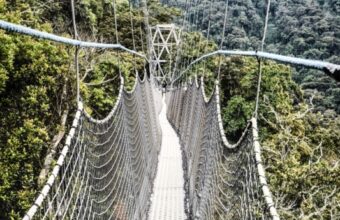
-
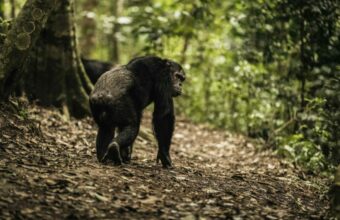
![Accessible, but busy, chimp trekking in Kibale]()
Accessible, but busy, chimp trekking in Kibale
East Africa’s busiest chimp-trekking destination, Kibale protects a 766-sq-km tract of tropical rainforest in the far west of Uganda. Home to around 1,000 chimps, this popular park has been dubbed the primate capital of East Africa, thanks to its rich diversity of monkeys. Indeed, I’ve quite often seen the 6 most common species – L’Hoest’s monkey, red-tailed monkey, Ugandan red colobus, black-and-white colobus, olive baboon and the endemic Uganda mangabey – in the course of one forest walk.
But the main attraction at Kibale is twice-daily chimp tracking excursions to a large community that was first habituated in the 1990s and often offers great opportunities to see the apes up close.
Pros: The success rate of chimp trekking at Kibale stands at well above 90%, the highest of any comparably accessible venue. You can also expect to see a wide variety of monkeys and colourful forest birds, particularly if you do a guided walk at the community-run Bigodi Wetland Sanctuary bordering the park.
Cons: On the other hand I think Kibale is to some extent a victim of its own popularity. Permits might be difficult to obtain at short notice, and the forest can feel uncomfortably crowded when – as often happens – several trekking parties converge on the same few chimps. To avoid the worst of the crowds I’d advise you go for an afternoon trek, as it’s generally quieter than the morning excursion.
![Hidden gems in Kalinzu Forest]()
Hidden gems in Kalinzu Forest
This underrated chimp-trekking destination protects 141 sq km of hilly escarpment rainforest bordering the similarly extensive Maramagambo Forest in Queen Elizabeth National Park. These two forests collectively protect a population of around 600 chimps, including two habituated communities in Kalinzu. Chimp tracking here operates as part of a well-organised community project, and the success rate stands at around 90%. General guided walks to see forest birds and monkeys are also offered, and funding has been obtained to start construction on Uganda's first suspended canopy walkway in 2024.
Pros: Kalinzu is very accessible to independent travellers. The trekking trailhead lies alongside a main road and borders Queen Elizabeth National Park, a popular safari destination.
This is one of Uganda's quietest chimp-trekking destinations. There’s no need to book a permit in advance, and you're unlikely to encounter other tourists once in the forest.
Cons: Slopes at Kalinzu are steep, and finding the chimps often involves a relatively long walk, so it generally requires a higher fitness level than other venues.
You may read elsewhere that Kalinzu is Uganda’s cheapest chimp trekking venue. This was true until January 2024, when the fee shot up from US$40 to US$130.
![Low cost chimp trekking at Kyambura Gorge]()
Low cost chimp trekking at Kyambura Gorge
Kyambura Gorge is a sheer-sided 100m-deep chasm named after the river that babbles through its forested base. It is sometimes referred to as the Valley of the Apes, in reference to its small resident chimp community, which has sadly become isolated from its counterparts in Kalinzu and Maramagambo as a result of deforestation. The chimps here are very habituated and in my experience they are usually seen with relative ease on guided treks, partly due to the gorge’s confined nature. Even if you miss out on chimps, Kyambura is very pretty and you can expect to see black-and-white colobus monkeys in the trees, hippos in the river, and a wide range of forest birds.
Pros: Kyambura Gorge runs along the eastern border of the popular Queen Elizabeth National Park, and chimp trekking is easily incorporated into a safari there.
At US$50 for foreigners, Kyambura Gorge is currently the cheapest place to track chimps in Uganda. This tracking fee excludes the Queen Elizabeth National Park entrance fee of US$40 per 24 hours, but if you are visiting the park, you’ll be paying the latter anyway.
Cons: The community here is relatively small (around 25 individuals) and numerically dominated by males, so you’re unlikely to see youngsters.
![Easy-going chimp trekking in Budongo Forest]()
Easy-going chimp trekking in Budongo Forest
Effectively a southern extension of Murchison Falls National Park, Budongo is a vast and biodiverse rainforest that is home to around 800 chimpanzees. This includes one very well habituated community whose core territory lies within easy walking distance of a main road. Despite Budongo’s convenient location for those doing a Murchison Falls safari, it receives relatively few visitors, making it a good alternative to Kibale for those hoping to avoid crowding. Other wildlife often seen from the road includes large troop of olive baboons, smaller monkeys such as black-and-white colobus, and the spectacular Abyssinian ground hornbill.
Pros: Chimp trekking in Budongo can easily be done en route to or from the popular Murchison Falls National Park, or as a half-day excursion from one of its camps or lodges
Budongo is a good choice if you are worried about your fitness. It’s the flattest of East Africa’s chimp-trekking destinations, and most of the time you'll be walking on a well-maintained grid of researchers’ paths.
Cons: The success rate, though greater than 80%, is lower than in Kibale or Kalinzu, and it may drop lower when the habituated community moves outside its core territory.
![Independent chimp trekking in Gombe]()
Independent chimp trekking in Gombe
Gombe is Africa's most famous chimp trekking destination. It was here, in the early 1960s, that the celebrated English primatologist Jane Goodall established a pioneering research and habituation project now cited as the world’s oldest ongoing study of wild animals. A relatively small park, Gombe supports roughly 100 chimps split between three different communities. It has a beautiful location on the forested eastern shore of Lake Tanganyika – the world’s longest, second deepest and reputedly least polluted major freshwater body – and is sufficiently isolated that it seldom gets busy.
Pros: If you want to see chimps hunting red colobus or other monkeys, Gombe is where you probably stand the best chance.
Gombe is an attractive option for independent travellers with plenty of time and a limited budget. Inexpensive lake-taxis run back and forth daily from the port of Kigoma, which is connected to Tanzania’s largest city Dar es Salaam by flights, trains and buses.
Cons: Because it is relatively small at 52 sq km, Gombe lacks the dramatic wilderness feel of its southerly near neighbour Mahale Mountains.
![Remote & picturesque Mahale Mountains]()
Remote & picturesque Mahale Mountains
Mahale Mountains ranks high among my favourite African national parks. Setting aside the issue of cost and accessibility, it is also probably my first choice chimp-trekking destination. One reason for this is the park’s idyllic location on Lake Tanganyika, below a stretch of Rift Valley escarpment capped by Mount Nkungwe, whose peak is around 1,700m higher than the sandy lakeshore beaches. Mahale also has a thrillingly remote feel. It is roughly 30 times larger than Gombe, yet its tourist infrastructure amounts to little more than a pair of luxury beachfront camps and one basic resthouse. And over several visits, I have always enjoyed excellent close-up encounters with members of the Mimikere community, which comprises 75 chimps and was habituated by Japanese researchers in the 1960s.
Pros: Mahale differs from most chimp trekking destinations in that it caters mainly to fly-in visitors spending three or four nights in the park. Because of this, you can track on multiple days, and departure times are flexible, which greatly increases your chance of an intimate chimp encounter.
Fly-in safaris to Mahale combine well with Katavi National Park, an equally untrammelled safari destination inhabited by plenty of elephant, buffalo, hippo and lion.
Cons: Fly-in safaris to Mahale are costly. It is worth the investment if you can afford it, but the park is not well suited to independent or budget-conscious travellers.
![Quirky Rubondo Island]()
Quirky Rubondo Island
One of Africa's quirkiest and most underrated protected areas, Rubondo comprises a lushly forested 240 sq km island set in the Tanzanian waters of Lake Victoria (the world’s second largest lake). The park was established in the 1960s as a proposed breeding centre for introduced Congolese rainforest animals. This experiment never really came together, but Rubondo does still support some introduced wildlife, including elephant and giraffe, alongside naturally occurring species such the swamp-loving sitatunga antelope. The island is also home to around 70 chimps descended from eight males and nine females released there in the late 1960s. After being left to their own devices for decades, Rubondo’s chimps have now been habituated for tourist visits.
Pros: Home to just one small luxury beach lodge, Rubondo Island makes for an exclusive and very tranquil add-on to a safari in the ever-popular Serengeti National Park.
Rubondo’s chimps are descended from individuals that were born wild in West Africa, then captured as youngsters and held in zoos or circuses. It is thus the easiest place to see the western chimpanzee, a critically endangered subspecies that is far rarer than its eastern counterpart.
Cons: Although Rubondo’s chimps are almost certain to be seen by determined visitors, locating them might involve a long walk, and they are shyer than in most other trekking destinations.
It is not easy for independent or budget-conscious travellers to arrange chimp trekking here.
![Explore the canopy of Nyungwe National Park]()
Explore the canopy of Nyungwe National Park
It feels slightly reductive to refer to Nyungwe as a chimp-trekking destination. East Africa’s largest montane rainforest blankets a series of mountains that tumble like monstrous green waves either side of the main road that bisects it. Nyungwe also harbours an exceptional biodiversity, thanks to an altitudinal span of 1,600m to 2,950m. True, the main motivation for most visits is to see chimps. But it is worth dedicating several days to exploring Nyungwe’s spectacular scenery, exceptional birdlife and primate diversity along a 180km network of forest trails that includes East Africa’s only suspended canopy walk.
Pros: Easily accessed on a surfaced road, Nyungwe combines well with gorilla trekking in Rwanda’s Volcanoes National Park and a Big Five safari in Akagera National Park.
Chimps aside, Nyungwe offers a variety of activities that will keep keen hikers and wildlife enthusiasts busy for days.
Cons: Trekking here can be tough going. Expect a pre-dawn start and drive of around two hours to reach the trailhead in good time. Once there, slopes are steep and slippery, and sightings are less reliable than the likes of Mahale or Kibale.
![Community conservation in Gishwati-Makura]()
Community conservation in Gishwati-Makura
Rwanda’s newest national park, Gishwati-Mukura was gazetted in 2016 to protect a pair of relict forest blocks on the Rift Valley escarpment above Lake Kivu. It offers sensational sunset views to the volcanic peaks of the Virungas, while wildlife includes the very localised golden monkey and L’Hoest’s monkey, along with 230 bird species and a small semi-habituated community of chimps. A unique feature of this small national park is that its creation was driven by local community members to help arrest soil erosion and fatal landslides caused by deforestation. Since sustainable community management policies were first initiated in 2015, several buffer zones have benefitted from reforestation and chimp numbers have grown from fewer than 15 to more than 35.
Pros: Visiting Gishwati-Mukura helps support an important community-driven conservation initiative. Visitor numbers are low and you are likely to have the forest to yourself.
Cons: Gishwati-Mukura’s chimps are still being habituated, so sightings are far from certain and most individuals are quite shy. Access to the forest is restricted to overnight guests at the community-run Forest of Hope guesthouse and campsite.
When to track chimps
Chimp trekking runs throughout the year at most of the national parks and forest reserves described above. Hiking conditions are generally best in the dry season, which varies from region to region, but broadly falls over June to August and December to February in Uganda and Rwanda, and August to October in western Tanzania.
Costs
The cost of chimp trekking varies considerably between locations, but it is invariably far cheaper than gorilla trekking. In Uganda, it currently stands at US$200 (including park entrance) at Kibale, US$50 (excluding the US$40 park entrance fee) at Kyambura Gorge, and US$130 (with no additional entrance fee) at Budongo and Kalinzu Forest.
In Rwanda, Nyungwe charges US$90 to non-residents (no additional fee) while at Gishwati-Makura it is included in the accommodation cost for Forest of Hope guesthouse and campsite.
In Tanzania, chimp trekking is included in the daily national park entrance fee of US$80 plus VAT for Mahale, US$100 plus VAT for Gombe and US$30 plus VAT for Rubondo, though in all cases you need to pay an additional guide fee of roughly US$20.
Chimp tracking permits
If you’re booking onto an organised tour, the operator should book your permits. Travelling independently, online bookings for Kibale and Kyambura Gorge can be made through the Uganda Wildlife Authority.
What to expect
These fascinating apes most often betray their presence with a communal pant-hoot call, an explosive, frenzied vocalisation that reverberates loudly through the forest interior. And once the chimps have been located, you’ll often have to race breathlessly behind them through the tangled undergrowth before finally they settle down to groom quietly in a forest clearing or climb athletically into the canopy of a fruiting tree.
Conditions vary greatly from one site and one day to the next, but generally speaking, tracking chimps is more challenging than tracking gorillas. In both cases you can expect to face a combination of steep, slippery paths and tangled undergrowth. But because chimps are so much more mobile and less sedentary than gorillas, pursuing them through the forest often requires a fair level of fitness and agility, and the tracking success rate is considerably lower. That said, my experience is that once you have located chimps, they may give you a bit of a run-around for a while, but four times out of five they’ll settle down at some point within the hour you’ll be allowed to spend with them.
Packing and preparations
A reasonable level of fitness is required to track chimps. If you are able to walk at a brisk pace for two hours at home, you should be fine. If not, it would be a good idea to get in some walking to build up your fitness.
Hiking boots are ideal for walking through the forest, though I usually just use trail running shoes. Bring a hat and sunscreen to protect you against the sun, as well as a poncho or raincoat in case of rain. I would recommend wearing full-length trousers (ideally tucked into your socks to deter biting ants) and long sleeves and gloves (for nettles). Most venues will provide you with walking stick (or create a makeshift one) by request.
There is no telling how long you will be out on the trail, but be prepared for anything from three to six hours. So carry plenty of drinking water (ideally around 2 litres) as well as a few packaged snacks, and make sure your camera or phone is fully charged.
Insider tip
If you are worried about your fitness, there are several places where orphaned chimps can be seen in attractive conditions without significant exertion. These include Ngamba Island in Uganda, Sweetwaters Sanctuary in Kenya, Chimp Eden in South Africa and Chimfunshi Wildlife Orphanage in Zambia. I’d stress that visiting such an orphanage is in no way comparable to tracking wild chimps, but these are all worthy projects affiliated to or endorsed by the Jane Goodall Institute.
























